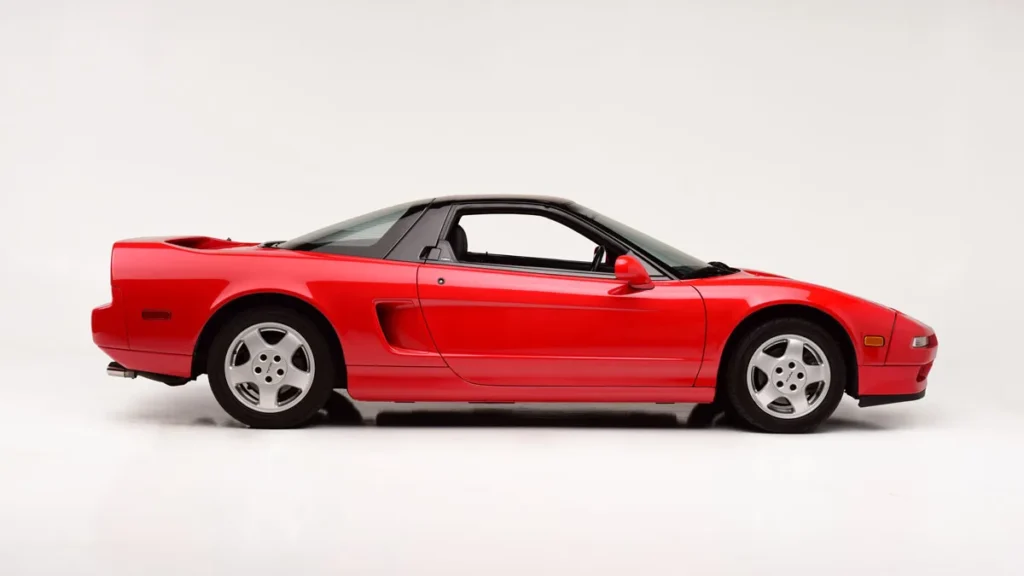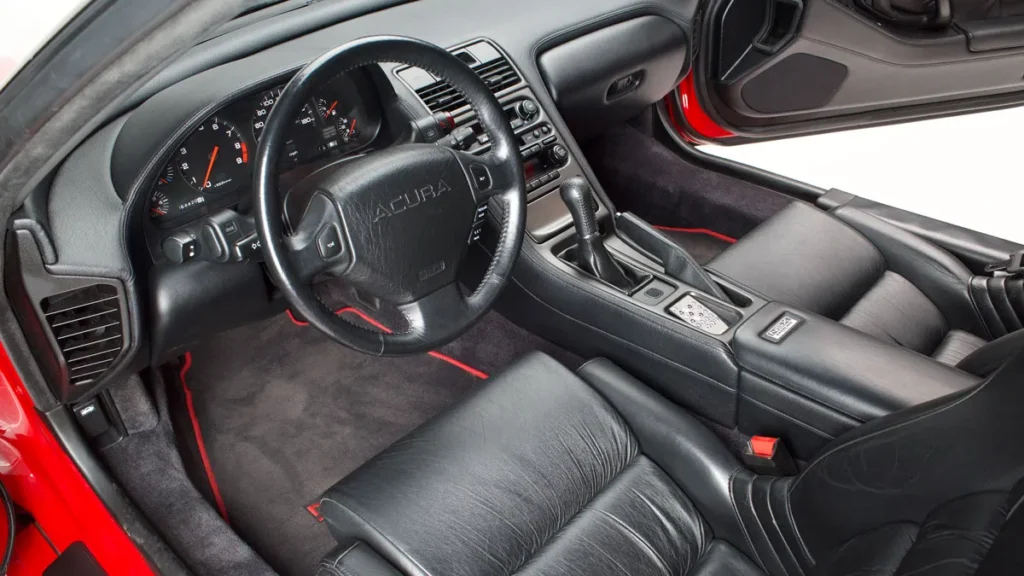By fusing innovative technology, exceptional everyday utility, and jaw-dropping performance, the 1991 Acura NSX rethought the entire definition of a sports vehicle. Originally intended to compete with the likes of Ferrari and other European supercars, Acura’s initial venture into the high-performance vehicle market became legendary. In this piece, we’ll take a look at the 1991 Acura NSX and how its innovative engineering, design ethos, and influence have endured.
How the Acura NSX Came to Be: The Story of Its Creation
An important turning point in the history of the automobile industry occurred with the creation of the Acura NSX, which is marketed as the Honda NSX in regions outside of North America. In the mid-1980s, Honda set out to build a supercar that would be both fast and reliable, two qualities that were lacking in many of its high-performance rivals at the time. In order to make the NSX handle like no other car, Honda brought in Formula 1 driver Ayrton Senna for some expert tuning.

Scientific Advancements: A Lightweight Aluminum Structure
A body and chassis constructed entirely of aluminum made history with the NSX. Engineers were able to strike the ideal balance between weight and strength thanks to this novel approach. The NSX’s remarkable agility was aided by its lightweight components, which contributed to its weight of little under three thousand pounds.
The NSX had a mid-engine layout and a groundbreaking aluminum body. Thanks to the nearly ideal distribution of weight, handling dynamics and cornering stability were greatly enhanced. The 1991 NSX was an engineering marvel due to its combination of lightweight materials and accurate engineering.
Thanks to its innovative suspension design, which featured double-wishbone suspension on all four wheels, the NSX displayed exceptional poise and responsiveness on the road. Along with its meticulously adjusted chassis, this provided an exhilarating and reassuring driving experience. With Ayrton Senna’s help, the NSX was designed to be lightning fast on straight highways and equally at home on racetracks with tight turns.
Practical and Versatile: A Driver’s Car
In contrast to many of its contemporaries, the Acura NSX was able to strike a good balance between performance and passenger comfort. Because of its unprecedented degree of comfort and dependability, the NSX was conceived as a daily supercar.

The NSX’s ergonomic driving stance, high visibility, and plush leather upholstery made it ideal for both the everyday commute and a day at the track. The electric power steering technology of the car made precision maneuvering at low speeds and effortless at high speeds, thanks to its mild yet responsive feedback.
The NSX’s dependability also changed the game. The NSX was constructed with Honda’s renowned engineering durability, in contrast to other European supercars that necessitated regular and expensive repair. One of the main reasons the NSX has stayed popular for so long is that owners can relax and enjoy the ride without constantly fixing it.
A Philosophy of Design: Form and Function in Harmony
Form and function were flawlessly combined in the 1991 Acura NSX. The car’s aerodynamic profile was designed to be both aesthetically pleasing and highly functional. The NSX’s broad stance and low-slung, wedge-shaped body worked together to reduce drag and make it a formidable competitor. A feature shared by many vehicles of that period, the pop-up headlights gave it an even more unique appearance.
The car’s performance was also greatly influenced by Honda’s emphasis on aerodynamics. Airflow was a primary consideration throughout the NSX’s design process, serving to both increase downforce and maintain engine temperature. The NSX was both aesthetically pleasing and highly practical because of this meticulous design.
The Incalculable Legacy of the Acura NSX from 1991
There can be no doubt about the impact of the 1991 Acura NSX. Its impact is evident in contemporary supercars, particularly those that aim for a compromise between practicality and performance. Supercars were always seen to be erratic and annoying, but the NSX allowed manufacturers to reconsider what a high-performance vehicle could be.
Modern high-performance vehicles continue to draw inspiration from the NSX’s groundbreaking engineering features, like as its lightweight build, mid-engine layout, and unique suspension design.
Impact on Upcoming Models and Rivals
European rivals took notice of the NSX’s success. In an attempt to stay competitive, well-established supercar manufacturers like Ferrari, Porsche, and others started using similar technologies and design principles in their cars. Japan proved it could manufacture a competitive vehicle with the NSX, thanks to its affordable, dependable, and powerful vehicle.

Recently, Acura brought back the NSX nameplate with a new model that continues the tradition of cutting-edge design and exceptional performance. Even though the most recent version has hybrid technology and all-wheel drive, the design and construction still clearly trace back to the original 1991 NSX.
In Sum: A Vehicle Revolutionary
Everyone knows that the 1991 Acura NSX was a game-changer in the world of sports cars. Supercars don’t have to sacrifice anything by combining cutting-edge innovation with practicality. Fans and collectors alike still hold it in high esteem as a classic due to the new standards it set for the industry in terms of design, performance, and dependability.








